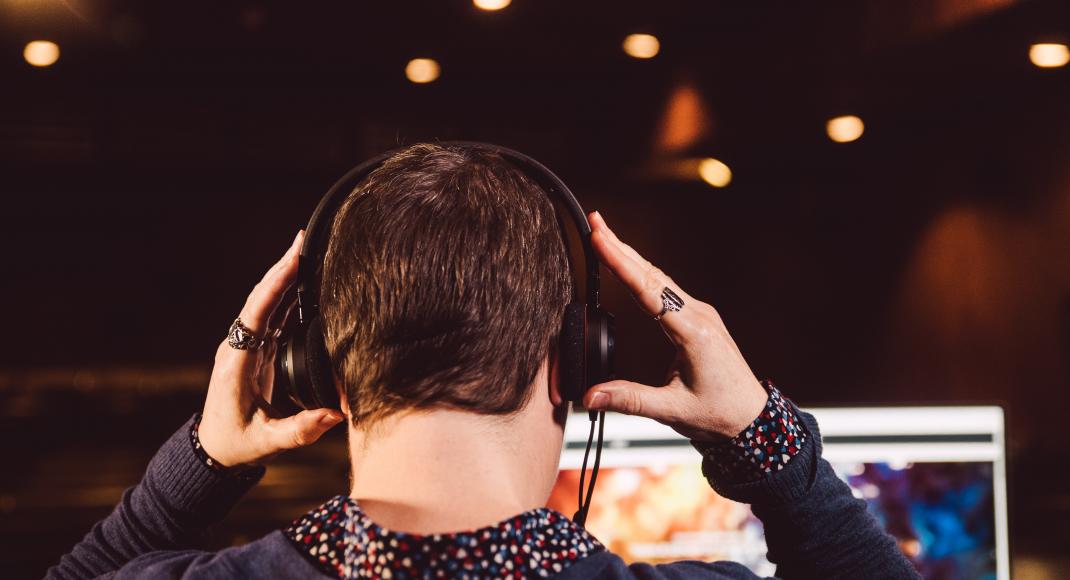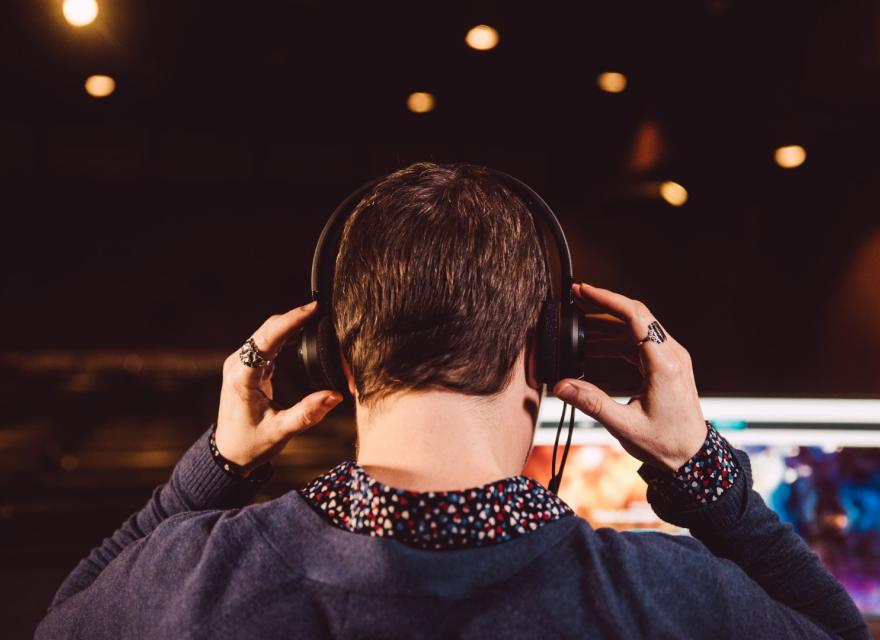Listen to AstroSounds
Stars vibrate like musical instruments. You can recognize a musical instrument by the specific timbre or timbre of the instrument. Likewise, you can recognize a star by the timbre of the sound of the star's vibrations. In other words, our ears can filter data about stellar phenomena that may be less accessible to our eyes. The new generation of space telescopes generates a veritable explosion of star data within astronomy. Can the human ear be used efficiently to analyze this data flow within this field? That is the research question that forms the basis of the citizen science project AstroSounds. A large group of people, citizens, students and their teachers, will therefore listen to and analyze the star data. AstroSounds wants to make everyone, young or old, a 'star listener', the AstroSounds team clarifies.

Sonification
A violin has a different timbre than, say, a piano. Stars also vibrate in their own way. They can be classified and analyzed based on their timbre. What are the advantages of the ear over the eye for the scientific analysis of star data?
"In the scientific sub-discipline on which AstroSounds is based, asteroseismology, we are going to analyze the light variations of vibrating stars to learn more about the construction and internal structure of stars. But the visual analysis of light data has certain limits. Certain types of binary stars, for example, two stars orbiting each other, are sometimes difficult to distinguish from a certain type of vibrating stars, the RR Lyrae stars. The differences in light data are sometimes very subtle.
Our ears are used to hearing many frequencies at the same time and are also sensitive to small changes in the sound spectrum. This way we can recognize someone's voice or even hear what his or her state of mind is. So we are trained or can be trained to hear what the eye does not notice, or hardly sees. That is why we are going to convert the light data from the stars into sounds; we call this process sonification.
By appropriately merging auditory and visual information about stars, astronomers can access scientific information that would disappear into the background noise based on visual information alone."
Data from NASA and ESA
AstroSounds is in line with the astronomical research of Prof. Kolenberg (KU Leuven/UAntwerp/VUB) and researcher Dr. Díaz-Merced, who obtained her doctorate in 2013 on the analysis of star data based on hearing. That scientific component is an essential part of AstroSounds. Which scientific questions require a solution?
“The scientific component of AstroSounds consists of further developing and refining the methodology to analyze stars based on visual analysis and auditory information, through the methodology of sonification. Concretely, there are two major scientific questions for AstroSounds; further develop the methodology of sonification so that sonification becomes a valuable tool to provide astronomers with additional information about stars; and we can engage citizens and students to participate in these star analyses on a large scale.
You can also add a number of derived but no less important objectives. The data we analyze in our project comes from NASA and ESA missions, among others. Our results can make a case for analyzing data in a multisensory way and also make this data more accessible to scientists and the general public. In other words, any discipline that works with data can discover the power of sonification. That is why the scientific publications of our results are important. We plan international contributions at conferences and in publications in the fields of asteroseismology, science communication and inclusive science. A publication in EOS is also an option. Finally, our project has an important educational component. At school, AstroSounds can be used as a STEAM project. Using creativity and art to explore scientific themes opens up many possibilities. In our team, a PhD will address the benefits of this, making AstroSounds a valuable case study in that regard as well."
Pacemaker
Traditionally, astronomy has great citizen science potential, and both citizens and students are fascinated by the cosmos. Do you experience that too?
"Astronomy is a science in which non-professionals can still play an important role. Amateurs, for example, play a significant role in discovering new comets and asteroids and monitoring certain variable stars. What makes our project unique is, on the one hand, the multisensory unlocking of astronomy and, on the other hand, the artistic component, which allows to appeal to a wider audience, both at school and beyond. We also reach people with visual disabilities, they are enthusiastic because they gain access through an auditory way to a world that was previously inaccessible to them."
Can the project put astronomy and by extension STEM and STEAM on the map in schools? Which educational tools do you use and is it appropriate to work tailored to the students?
"AstroSounds is really a pacemaker for astronomy and by extension for STEM and STEAM in schools. In any case, the project stimulates in all children and students, regardless of their age, the admiration and amazement for the immeasurable of the cosmos, the stars, for the achievements of space travel and for the potential of sound in scientific research. Wonder is an important motivator to get started in astronomy, the sciences or STEM. We also take the age and interests of the students very much into account."
AstroSounds is a pacemaker for astronomy and by extension for STEM and STEAM in schools. The project stimulates admiration for the immeasurableness of the cosmos, the stars, the achievements of space travel and the potential of sound in scientific research.
First steps
"In primary school, we can incorporate AstroSounds into world orientation classes as well as music education classes. Sonification teaches students not only to perceive with their eyes, but also with their ears. A 'space concert' in the classroom or the creation of their own (invented) stars are also possible. This way the children learn in a playful way that stars are not massive rigid spheres and that they are so much more than ordinary lights in the sky. Through AstroSounds, they take their first important steps in the world of science, in which natural phenomena are given an explanation, and in the world of STEM, in which science and technology complement and reinforce each other.
We also work in a differentiated manner in secondary schools. Scientifically oriented students learn to observe in a targeted manner and thus arrive at scientific explanations from their observations. The combination of music and astronomy is a great asset and motivator. Technically oriented students are challenged to design and build a setup that visualizes AstroSounds and makes it accessible to the general public. Their installations will be presented to the general public in the Planetarium, among other places."
Star listeners
How can citizens, with or without visual impairment, currently contribute to AstroSounds? Do the data they provide still undergo a quality check?
"At the moment we need citizens who want to test the first versions of the digital tools and give meaningful feedback. At a later stage we want to roll out these tools to a larger group of people. After a short training, provided in the digital tool, participants will analyze existing stars. At that stage, we want to find out to what extent the general public can reliably classify stars through sonification. For example, we carry out a major quality check of the proposed methodology. We are also planning a public event at the Planetarium where the project results will be shown to the general public and citizens and students will have a wide forum to present their results."
To efficiently engage citizens and students, you roll out specific ICT material and an app. Is the rollout going smoothly?
"Ons consortium, dat bestaat uit KU Leuven, PXL Music, UCLL en het Planetarium van de Koninklijke Sterrenwacht van België, heeft ervaring met het ontwikkelen van digitaal lesmateriaal voor scholen. We vertrekken vanuit die expertise om bookwidgets voor gebruik op laptops, tablets… te ontwikkelen. Widgets hebben het grote voordeel dat ze handig in gebruik zijn en ook gemakkelijk in te zetten in scholen. Zo trainen we het gehoor van de deelnemers. De interactieve AstroSoundsbookwidget is als het ware hun leermeester. Eerst leren de burgers verschillende muziekinstrumenten en mensenstemmen van elkaar te onderscheiden, daarna luisteren ze naar enkele trillende sterren om ook daar opnieuw verschillen te horen.
"Our consortium, which consists of KU Leuven, PXL Music, UCLL and the Planetarium of the Royal Observatory of Belgium, has experience in developing digital teaching materials for schools. We use that expertise to develop book widgets for use on laptops, tablets… Widgets have the great advantage that they are easy to use and also easy to use in schools. For example, we train the hearing of the participants. The interactive AstroSounds book widget is, as it were, their teacher. First, the citizens learn to distinguish different musical instruments and human voices, then they listen to some vibrating stars to hear differences.
The corona outbreak did not hinder the development of our digital tools and the announcement of our project. For example, the contribution of AstroSounds to the Science Day on November 22 was completely digital. Nearly 600 people watched our introductory film. There were about 400 likes from registered users on the Science Day website. In the livestream session, about 60 people asked astronomers Katrien Kolenberg (astrophysicist KULeuven/UAntwerp/VUB) and Peter De Cat (astrophysicist Royal Observatory of Belgium) questions. A video with more explanation can be found here or watched below."
Potential
What are the key lessons you take from the launch and rollout of AstroSounds? Have you adjusted certain project components?
“It is essential from the very beginning to involve citizens, students and children in the development of what you ultimately want to offer to the general public. Input and feedback are crucial to make material accessible and attractive to the general public. The project has only just started, but we are constantly making adjustments. For example, we have learned that it is a challenge to use an accessible language. As scientists we communicate too often in specific jargon that is obvious to us. We should refrain from that.
A crucial key to the success of our citizen science project is the unique interdisciplinary composition of our consortium with an astronomer (KU Leuven/UAntwerp/VUB), a musical expert (PXL Music), experts in STEM education (UCLL Art of Teaching) and a expert in science communication (the Planetarium). Add to that the power of Scivil, which provides us with concrete expertise in the field of citizen science and you immediately notice the potential of AstroSounds in the Flemish citizen science landscape."
Interview and text: Hilde Devoghel (Tales and Talks)
Pictures: An van Gijsegem
